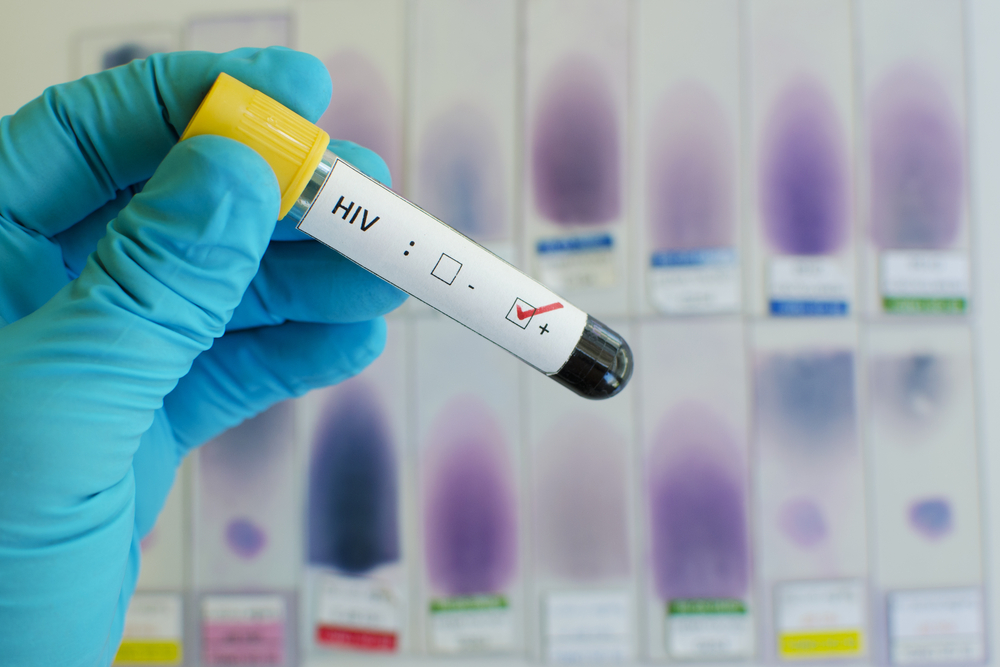Sarcoidosis Developed in Patient Being Treated for HIV Infection, Case Report States
Written by |

Patients receiving treatment for HIV infection may develop sarcoidosis, according to a new study published in the journal Respiratory Medicine Case Reports.
In the study, “Pulmonary Tuberculosis Followed By Sarcoidosis In An HIV-Infected Patient: A Case Report And A Simplified Diagnostic Flowchart For Diagnosis And Treatment Of Sarcoidosis,” researchers reported the case of a man who developed sarcoidosis after being treated for HIV infection and pulmonary tuberculosis.
One of the main features of sarcoidosis is the presence of a type of immune cell, called T-cells, expressing the CD4+ protein. These cells trigger inflammation that results in the formation of granulomas (inflamed tissue) in several areas, such as the lung, skin, and lymph nodes.
Patients infected with HIV have a comprised immune system with reduced levels of T-cells and a low incidence of autoimmune diseases. But antiretroviral therapy – an HIV treatment – aims to restore the patient’s immunity, including CD4+ T-cell levels, which may ultimately increase the incidence of sarcoidosis.
Indeed, a sarcoidosis diagnosis in HIV patients is associated with large numbers of CD4+ T-cells (more than 200 cells/μl).
Previous studies on the co-existence of sarcoidosis and HIV infection have reported that sarcoidosis develops during the restoration of T-cell immunity in the first nine months of antiretroviral therapy. For this reason, sarcoidosis is considered a manifestation of an “immune reconstitution syndrome.”
Researchers followed a 26-year-old North African man diagnosed with pulmonary tuberculosis and HIV infection in 2003. The patient received treatment for the tubercular infection as well as anti-HIV therapy to restore his immunity. The team lost track of the patient the following year. In 2006 he was readmitted and his antiviral therapy was adjusted to his condition; shortly after that, the patient was lost again.
In 2008 the patient was found to be in good condition, but was highly viremic because he wasn’t taking his antiviral therapy on a regular basis. He had chronic cutaneous maculopapular lesions on his right arm.
The following year he developed enlarged lymph nodes in the neck, underarm, and groin. The patient underwent several exams on different occasions, including a chest x-ray, CT scans, bronchoscopy, and skin biopsies to exclude hematologic malignancies, atypical mycobacterial or fungal infections, or reactivation of tuberculosis.
At the start of 2010 the patient was diagnosed with sarcoidosis. He started steroid therapy and, after one month, the lymph nodes were considerably reduced. Corticosteroid and anti-HIV therapy was continued for six months, but the patient started showing signs of liver complications. By the time the doctors decided to take a liver biopsy, he again could not be found.
Still, this case helped the authors define several critical points when evaluating a sarcoidosis patient with HIV.
“Treatment of tubercular infection, together with anti-HIV therapy, re-established T-cells compartment,” the team wrote in their report. “But the patient, for several reasons, was not regular in assuming therapies. After anti-[tuberculosis] therapy was completed (but not directly observed by our service), [anti-HIV] therapy was interrupted and modified several times during the following 3-5 years.”
The team believes that this treatment inconsistency prolonged and influenced the course of his disease.
Researchers also noted that during the evaluation of sarcoidosis patients infected with HIV, doctors should consider other medical conditions, such as lymphoma or mycobacterial infections.
They also point out that “in case of radiological signs of lung granulomas, in HIV patients undergoing immune reconstitution (particularly during the first 9 months of HAART therapy) it is essential to explore the possibility that the patient is affected by a chronic granulomatous disease such as sarcoidosis.”
These patients can also be at high risk of developing tuberculosis during or after immunosuppressive therapy with corticosteroids.
“When we are evaluating a sarcoidosis patient co-infected with HIV, we may also consider to be in front of a person at increased risk to develop active tuberculosis during or after immunosuppressive therapy,” the authors wrote. “For this reason it should be interesting to propose TB prophylaxis to all HIV-positive patients affected by sarcoidosis when immunosuppressive therapy is considered.
“Further studies are needed in order to evaluate the risk of developing active tuberculosis in HIV patients with sarcoidosis after immunosuppressive therapy, if they were or not previously submitted to anti-TB prophylaxis or therapy,” they added.





